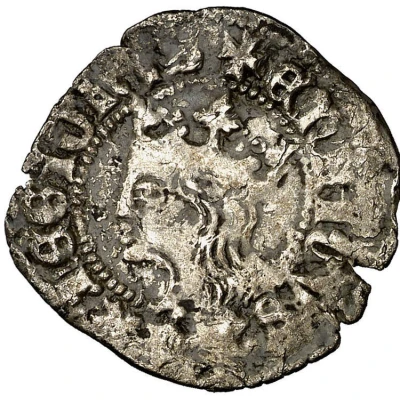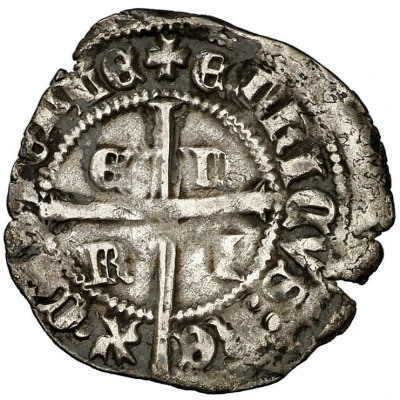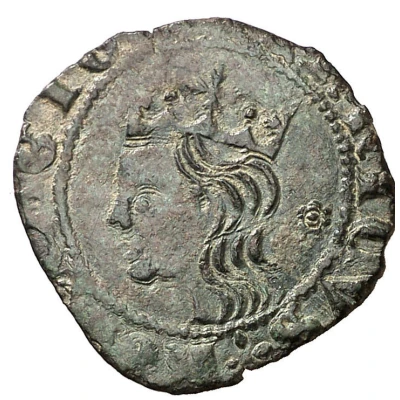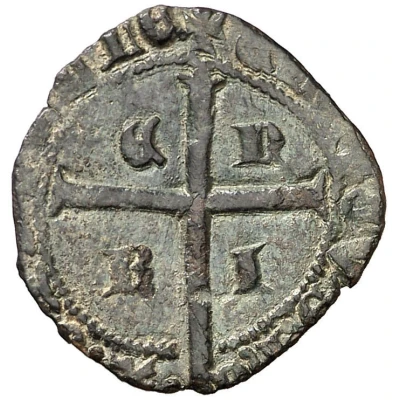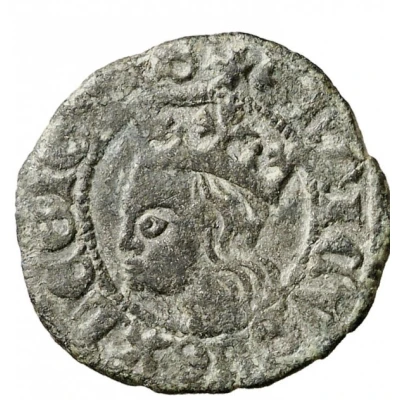
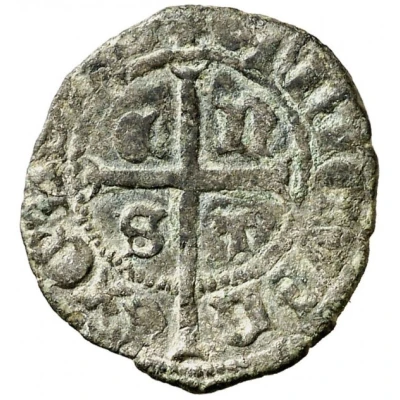

© Aureo & Calicó S.L., subastas numismáticas
Cruzado - Henry II ND
| Billon | 2 g | - |
| Issuer | Kingdom of Castile and Leon (Spanish States) |
|---|---|
| King | Henry II (1366-1379) |
| Type | Standard circulation coin |
| Years | 1369-1373 |
| Value | 1 Real (⅑) |
| Currency | Real (1350-1400) |
| Composition | Billon |
| Weight | 2 g |
| Shape | Round (irregular) |
| Technique | Hammered |
| Demonetized | Yes |
| Updated | 2024-10-07 |
| Numista | N#145423 |
|---|---|
| Rarity index | 100% |
Reverse
Cross
Script: Latin
Lettering: E N R I ENRICVS REX CASTELLE
Translation: Enrique Enrique II King of Castile
Comment
The diameter of the coin can be used to attribute roughly the minting year, since this coins carry no date.An excerpt of ENRIQUE II Y SU MONEDA TRASTAMARISTA by Elena Ballesteros Iglesias details how the size of this coin and its silver content diminished in a short period of 4 years.
Translated from Spanish, from the original research paper (https://www.academia.edu/6838527/ENRIQUE_II):
"The cruzados should have a size of 120 pieces on a Mark and one eighth of silver, that is, a weight of 1.94 g containing 0.242 g of silver, slightly less than an eight of silver, to the detriment of the Real. Three periods are distinguished, the first one in which the cruzados would reach legal weight and show a Latin cross, which would include those made between May 1369 and June 1370; a second one, in which the cruzados would weight around 1.50 g, minted until the year 1371; and those minted later, with a weight that would slightly exceed one gram. The devaluation of 1370 brought not only a reduction in the weight but also in the actual silver content of the cruzados, to the point that their manufacture would have been uneconomical if the value of the silver had been higher than that of the cruzado itself"
More information about the historical reasons for Henry II to mint this coin and others (Cornado, Real) are included in this interesting paper.
Interesting fact
The Cruzado coin from the Kingdom of Castile and Leon, which was in circulation during the reign of Henry II (1369-1373), has an interesting feature. The coin was made of Billon, a type of alloy that is composed of a mixture of metals, including copper, silver, and sometimes gold. The fact that the coin was made of Billon is interesting because it was a common practice during that time period for coins to be made of precious metals like gold or silver, but the use of Billon was a more cost-effective option for the kingdom. This highlights the resourcefulness and fiscal responsibility of the kingdom during that time.
